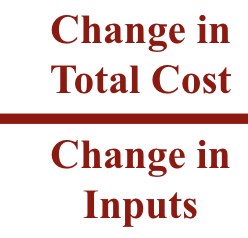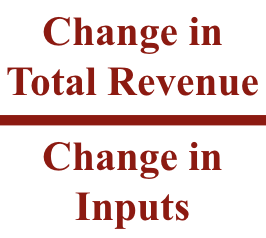Unit 5 Flashcards
0.0(0)
0.0(0)
Card Sorting
1/33
Earn XP
Description and Tags
Study Analytics
Name | Mastery | Learn | Test | Matching | Spaced |
|---|
No study sessions yet.
34 Terms
1
New cards
four factors of production
* land
* labor
* capital
* entrepreneurship
* labor
* capital
* entrepreneurship
2
New cards
production factor - land
all natural resources that are used to produce goods and services
3
New cards
production factor - labor
any effort a person devotes to a task for which that person is paid
4
New cards
production factor - capital
physical - any human made resource used to create other goods and services
human - any skill or knowledge gained by a worker through education and experience
human - any skill or knowledge gained by a worker through education and experience
5
New cards
production factor - entrepreneurship
ambitious leaders that combine the other factors of production to create goods and services
6
New cards
factor prices
payments made for the use of factor production
land → rent
labor → wage
capital → interest
entrepreneurship → profit
land → rent
labor → wage
capital → interest
entrepreneurship → profit
7
New cards
demand for labor
* different quantities of workers businesses are willing and able to hire at different wages
* inverse relationship between wage and quantity demanded
* inverse relationship between wage and quantity demanded
8
New cards
supply for labor
* different quantities of individuals that are willing and able to sell their labor at different wages
* direct relationship between wage and quantity supplied
* direct relationship between wage and quantity supplied
9
New cards
higher wages give workers incentives to
leave other industries or give up leisure activities
10
New cards
minimum wage
* minimum amount employers are allowed to pay their workers
* wage floor above equilibrium price
* wage floor above equilibrium price
11
New cards
unemployment on a graph is
surplus of workers
12
New cards
benefits of increasing minimum wage
don’t have poor people living in the street
13
New cards
drawbacks of increasing minimum wage
leads to more unemployment and higher prices
14
New cards
marginal resource cost
additional cost of an additional resource (worker)
15
New cards
marginal resource cost (MRC) formula
change in total cost divided by change in inputs

16
New cards
marginal revenue product
additional revenue generated by an additional worker (resource)
17
New cards
marginal revenue product (MRP) formula
change in total revenue divided by change in inputs

18
New cards
labor market imperfections (reasons for differences in wage)
* insufficient/misleading job info → prevents workers from seeking better employment
* geographical immobility → people are reluctant or too poor to move and thus accept a lower wage
* unions → collective bargaining and threats to strike lead to higher wages
* wage discrimination → people are paid different for the same job based on race, gender, etc.
* geographical immobility → people are reluctant or too poor to move and thus accept a lower wage
* unions → collective bargaining and threats to strike lead to higher wages
* wage discrimination → people are paid different for the same job based on race, gender, etc.
19
New cards
shifters in demand for labor
1. price of output (price of product increases, worker becomes more valuable)
2. productivity of the worker (more productive → more valuable)
3. change in price of other resources
20
New cards
derived demand
demand for resources is determined by the products they produce
21
New cards
shifters in supply of labor
1. education and training
2. availability of alternative options
3. immigration and mobility of workers
4. cultural expectations
5. working conditions
6. preferences for leisure
22
New cards
college leads to higher wages - human capital argument
education makes you more productive by giving you the skills to succeed in the workforce
23
New cards
college leads to higher wages - signaling argument
diplomas signal to employers that you are more likely to be a valuable employee
24
New cards
college leads to higher wages - ability bias argument
students attending college are more intelligent and hard working than non-college bound students and would earn more even if they didn’t go to college
25
New cards
types of labor markets
* perfect competition
* monopsony
* monopsony
26
New cards
characteristics of perfectly competitive labor markets
* many small firms hiring workers (no one firm is large enough to manipulate the market)
* many workers with identical skills
* wage is constant
* workers are wage takers (firms can hire as many workers as they want at a wage set by the industry)
* many workers with identical skills
* wage is constant
* workers are wage takers (firms can hire as many workers as they want at a wage set by the industry)
27
New cards
MRC - perfectly competitive labor markets
MRC = wage set by market
MRC is constant
MRC is constant
28
New cards
MRP - perfectly competitive labor markets
MRP = marginal product x price
29
New cards
why does MRP eventually fall
diminishing marginal returns
30
New cards
MRP determines ---- for labor
demand
* firm is willing and able to pay each worker up to the amount they generate
* firm is willing and able to pay each worker up to the amount they generate
31
New cards
continue to hire until
MRP = MRC
32
New cards
labor market firm graphs
supply (wage) is set by industry
33
New cards
monopsony characteristics
* one firm hiring workers (large enough to manipulate market)
* workers are relatively immobile
* firm is wage maker
* workers are relatively immobile
* firm is wage maker
34
New cards
monopsony graph
* MRC straight upward
* supply of labor straight upward, below MRC
* MRP up then down
* supply of labor straight upward, below MRC
* MRP up then down